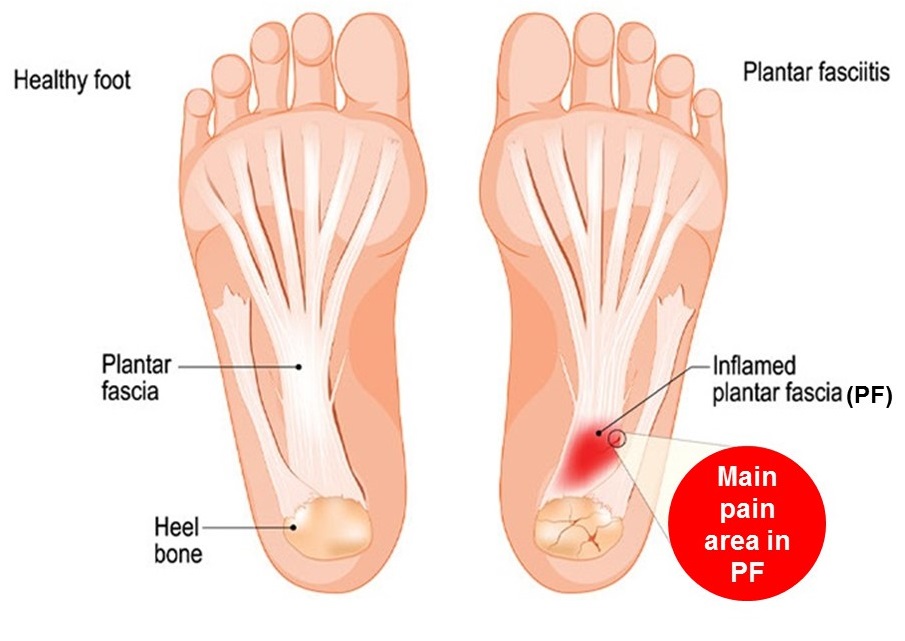
Cartoon illustration of the bottom of a normal foot vs plantar fasciitis foot
By: Rukhsar Jabbar. M.Sc. Physiotherapy. Freelance Health Writer. Medical review and editorial support provided by the DLHA Team
Plantar fasciitis commonly occurs due to repetitive strain causing hardly visible damage (microtears) in your plantar fascia. [1]
The common causes, symptoms and management of plantar fasciitis are discussed here.
While often benign, untreated plantar fasciitis can lead to significant pain and disability. Symptoms improve wit basic care and oral pain medications in 70–80% of patients within nine to twelve months; but surgery may be necessary in 5–10% of cases [1]
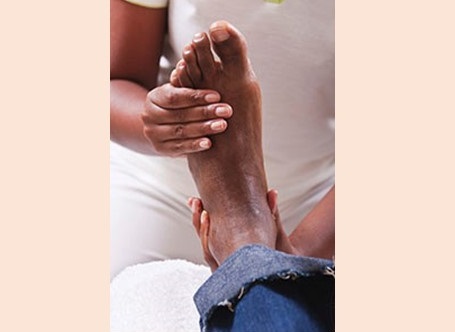
A physiotherapist providing foot care for diabetic neuropathy patient
Diabetes is a chronic disease that occurs when your blood sugar (glucose) is too high because your body lacks or has an insufficient chemical (hormone) called insulin. When it is not treated adequately, diabetes can damage several tissues of the body including a nerve-related damage known as diabetic neuropathy. Nerves are unique tissue bundles that transmit signals between the brain and your various body regions and enable you to feel sensations and move y0ur body parts. [2]
The older you get and the longer you have diabetes, the greater the likelihood that you may experience diabetic nerve damage. Controlling your diabetes is crucial to avoiding health issues like diabetic neuropathy.
Diabetes damages nerves directly and indirectly by causing harm to the tiny blood vessels that provide your nerves with nutrition and oxygen. Your nerves cannot operate properly if they are not receiving enough oxygen and nourishment. [2]
Symptoms of diabetes neuropathy include discomfort, numbness, shakiness, and foot sores (ulceration of the foot). [3]
In order to prevent further nerve damage if you have diabetic neuropathy, you should control your diabetes.[2]
Prevention techniques include lifestyle changes, foot care, and glucose management. [3]
All diabetics need to take great care of their feet, but those who suffer peripheral neuropathy require much more attention each day. Visit with your healthcare provider at least once a year, or more frequently if you experience feet issues. [2]
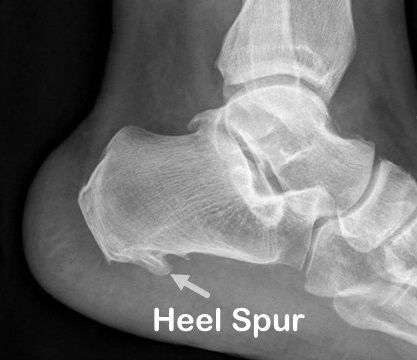
An X-ray of the left foot showing heel spur at white arrow
A heel spur is a bony protrusion inside your foot that protrudes below your back heel bone. When your foot ligaments are under tension, heel spurs develop. Until they seek treatment for heel discomfort, the majority of people are unaware that they have a heel spur. Heel spurs are incurable. Medical professionals advise non-surgical measures to reduce heel spur symptoms. [4]
Your body's reaction to pressure and strain on the ligaments and tendons in your feet is heel spurs. For instance, your body produces a heel spur in response to the stress of developing plantar fasciitis.
Additionally, if you have a walking condition or rip the tendon along your heel bone frequently, you may get heel spurs. Heel spurs may also develop when a disease or condition impairs your balance and coordination, making it difficult for you to walk normally. [4]
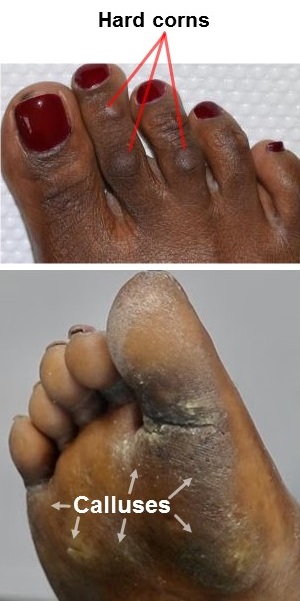
Image showing corns on the top of toes and calluses on the bottom of foot
Calluses and corns form on the skin in response to friction and pressure. They are nature’s ways of protecting the skin from repetitive injury. They appear as thick, rough patches of skin that may form in the foot or hand. The two though are different in their characteristics.
A foot corns has a hard centre surrounded by a swollen skin. It may be painful when pressed. Hard corns usually forms on top of toes – usually the small toe. Soft corn forms more between the toes.
Foot calluses are rarely painful and develop more at pressure points such as the heel, ball of foot and in front of the knee. Their sizes vary, but they are commonly larger than corns.
Frequently, corns and calluses aren’t serious conditions and you can take care of any discomfort that they cause by doing the following: [6]
If however a corn or callus gives you a lot of pain or discomfort, or you are a diabetic patient, see your doctor first before taking care of it on your own.
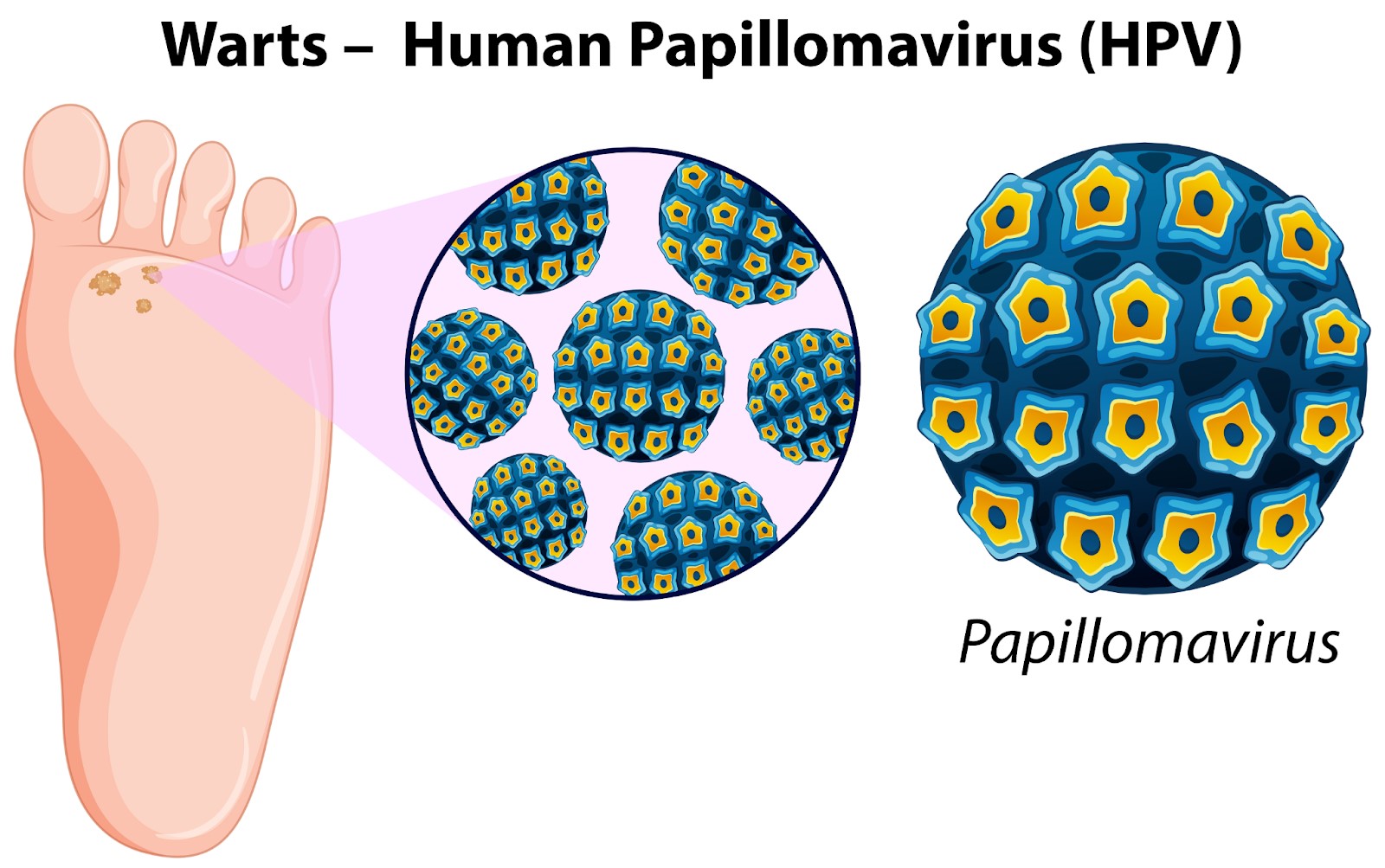
Illustration of plantar warts on the bottom of foot with the germ (HPV virus) causing it, Image by brgfx on Freepik
Small, rough growths on the feet are called plantar warts. As the areas that experience the most pressure, the balls and heels of the feet are typically where they appear. A wart may also develop inward under this pressure, under a thick, hard covering of skin called a callus. [5]
Plantar warts are caused by infection of the outer layer of the skin of the soles of the feet by the Human Papillomavirus (HPV). The virus enters the foot through microscopic incisions, fractures, or weak areas, and forms warts. Warts can linger for several years in adults and a few months to two years in youngsters if treatment is not received. [5]
The signs and symptoms of plantar wart signs and symptoms include:
To help prevent plantar warts:
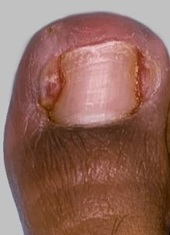
Photo of ingrown toenail in right big toe with wound on the inner side of the toe
When the nail plate penetrates the skin around the toenails (periungual epidermis), it can result in an ingrown toenail and cause infection and irritation. If treatment is not received, ingrown toenail results in significant pain, suffering, and incapacity. While ingrown toenails can occur at any age, teens and young adults are the most common age group to have them. The most common site are the nails of the big toes (hallux). [7]
Improper nail trimming is the most common cause of ingrown toenail as it can result in a nail spike that traumatises nearby soft tissue. Ingrown toenails can also be caused by trauma, excessive foot sweating (hyperhidrosis), poor foot cleanliness, tight shoes, and some drugs. [7]
The majority of people with ingrown toenail arrive with toe pain. Different degrees of discomfort and handicap may result from this pain, ranging from mild walking difficulties to total incapacity to move around. [7]
Ingrown toenail treatment options include both pain medication and surgical procedures. [7]

An obese black man choosing what to eat between bowl of salad in the right hand and a hamburger im the left. Image by rawpixel.com on Freepik
Obesity is closely connected to several foot problems and therefore foot pain:
Foot pain associated with obesity is best treated by focusing on weight reduction management, and the use of pain-relieving oral medications.
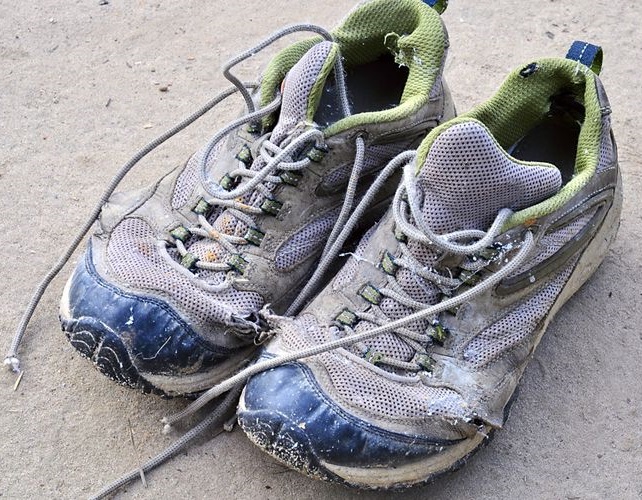
Image of over worn and damaged sneakers
As most of the time, fit governs function, meaning that if a shoe does not fit a person correctly, it cannot serve its intended purpose. Poorly fitted shoes play a significant role in the development of skin lesions like corns and calluses as well as structural foot disorders like hallux valgus (lateral deviation of first digit of foot) and lesser toe deformity. [9] So the pathway to pain from wearing poorly fitted shoes is clear. So is relieving pain from poorly fitted shoes.
References
1. Jabbar R. Plantar fasciitis: A foot condition many Africans might never have heard about. [Internet. 2024 June 12] Datelinehealth Africa. Cited June 25 2024. Available from here.
2. National Institute of Diabetes and Digestive and Kidney Diseases. What is diabetic neuropathy? [Internet. Last reviewed 2018 Feb]. Cited 2024 Jun 16. Available from here.
3. Smith S, Normahani P, Lane T, Hohenschurz-Schmidt D, Oliver N, Davies AH. Prevention and Management Strategies for Diabetic Neuropathy. Life (Basel). 2022 Aug 3.12(8):1185. doi: 10.3390/life12081185. Available from here.
4. Cleveland Clinic. Heel spurs. [Internet. Last reviewed 2021 Oct. 19]. Cited 2024 Jun 16. Available from here.
5. Mayo Clinic. Plantar warts. [Internet 2024 Feb. 7]. Cited 2024 Jun 17. Available from here.
6. NHS UK. Corns and calluses. [Internet, Last reviewed 2022 Aug. 24]. Cited 2024 Jun 17]. Available from here.
7. Chabchoub I, Litaiem N. Ingrown toenails. [Updated 2022 Sept. 18] In: StatPearls [Internet]. Treasure Island (FL): StatPearls Publishing; 2024. Cited 2024 Jun 18. Available from here.
8. Butterworth PA, Menz HB, Urquhart DM, Cicuttini FM, Pasco JA, Brennan SL, Wluka AE, Strauss BJ, Proietto J, Dixon JB, Jones G, Landorf KB. The association between obesity and foot pain: metabolic, biomechanical or both? J Foot Ankle Res. 2015 Sep 22;8(Suppl 2):O5. doi: 10.1186/1757-1146-8-S2-O5. Available from here.
9. Buldt AK, Menz HB. Incorrectly fitted footwear, foot pain and foot disorders: a systematic search and narrative review of the literature. J Foot Ankle Res. 2018 Jul 28;11:43. doi: 10.1186/s13047-018-0284-z. Available from here.
Related: Plantar Fasciitis: A foot condition many Africans might never have heard about
Published: June 12, 2024
© 2024. Datelinehealth Africa Inc. All rights reserved.
Permission is given to copy, use and share content for non-commercial purposes without alteration or modification and subject to source attribution.